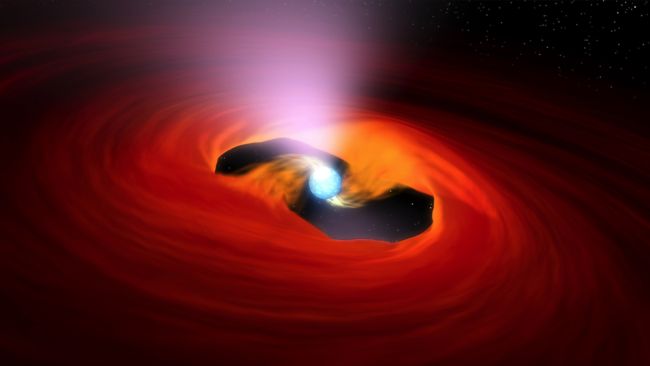Observing outburst onset in a low-mass X-ray binary
 SAX J1808.4—3658 is the first accretion-powered millisecond pulsar
ever discovered, and still one of the best-studied, thanks to a quasi-regular
series of outbursts since 1996.
Based on the regularity of the outbursts, I'd predicted that it would return
to activity in 2019 May. This prediction was a bit off, as it turned
out, since we didn't hear a peep out of it until late July in the same year.
Even so, thanks to the prediction and a series of optical and X-ray
observations led by Monash PhD student Adelle Goodwin, we gathered data giving
a view of the outburst onset of unprecedented detail.
SAX J1808.4—3658 is the first accretion-powered millisecond pulsar
ever discovered, and still one of the best-studied, thanks to a quasi-regular
series of outbursts since 1996.
Based on the regularity of the outbursts, I'd predicted that it would return
to activity in 2019 May. This prediction was a bit off, as it turned
out, since we didn't hear a peep out of it until late July in the same year.
Even so, thanks to the prediction and a series of optical and X-ray
observations led by Monash PhD student Adelle Goodwin, we gathered data giving
a view of the outburst onset of unprecedented detail.
Adelle presented her work at the 236th AAS meeting last week, and also took part in a press event the same day. Our press release got picked up and distributed widely, at space.com, Science Daily,, phys.org,, CNET and even Nine news. Adelle also appeared on RRR's Einstein-a-go-go show and was interviewed by a number of other outlets.
On the science side, the unexpectedly long delay of 12d between the optical and X-ray activity may have implications for the most widely-accepted model which explains how these outbursts are triggered. Adelle's paper on the study has been submitted to MNRAS.
And the next outburst? You'll have to wait until 2023 November — or perhaps even later.
Read the paper arXiv:2006.02872


 The 599 Hz millisecond pulsar IGR J00291+5934 is a source I've been
studying for more than a decade, having been involved in the
The 599 Hz millisecond pulsar IGR J00291+5934 is a source I've been
studying for more than a decade, having been involved in the
 The third accreting millisecond pulsar discovered in 2011 August by
ESA's
The third accreting millisecond pulsar discovered in 2011 August by
ESA's  IGR J00291+5934, as well as being the fastest known accretion-powered
millisecond pulsar, is unusual in that it's shown repeated outbursts that
have been observed by RXTE. Jake Hartman, Deepto and I had been
close to submitting a terrific paper doing the phase connection between the
2004 and 2008 outbursts, when to our dismay Alessandro Patruno posted a paper
(
IGR J00291+5934, as well as being the fastest known accretion-powered
millisecond pulsar, is unusual in that it's shown repeated outbursts that
have been observed by RXTE. Jake Hartman, Deepto and I had been
close to submitting a terrific paper doing the phase connection between the
2004 and 2008 outbursts, when to our dismay Alessandro Patruno posted a paper
( Using NASA’s Swift and Rossi X-ray Timing Explorer (RXTE) satellites, astronomers have discovered one of the most bizarre planet-mass objects ever found. The object’s minimum mass is only about 7 times the mass of Jupiter. But instead of orbiting a normal star, this low-mass body orbits a rapidly (182 Hz) spinning pulsar. It orbits the pulsar every 54.7 minutes at an average distance of only about 230,000 miles (slightly less than the Earth-Moon distance). [ from the
Using NASA’s Swift and Rossi X-ray Timing Explorer (RXTE) satellites, astronomers have discovered one of the most bizarre planet-mass objects ever found. The object’s minimum mass is only about 7 times the mass of Jupiter. But instead of orbiting a normal star, this low-mass body orbits a rapidly (182 Hz) spinning pulsar. It orbits the pulsar every 54.7 minutes at an average distance of only about 230,000 miles (slightly less than the Earth-Moon distance). [ from the  I'm not sorry to be wrong about
I'm not sorry to be wrong about 

